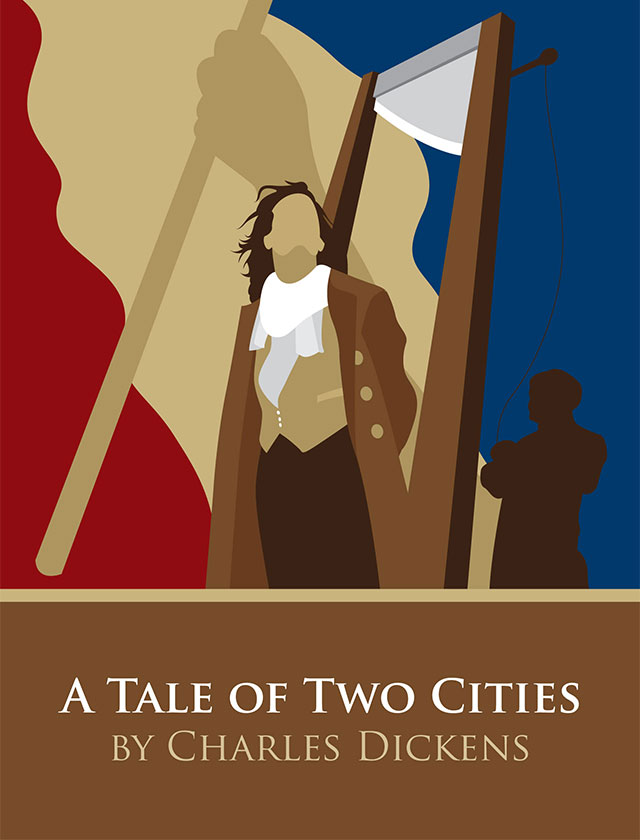A Tale of Two Cities
by Charles Dickens
Madame Defarge
In many ways, Madame Defarge is the villain of the story, but to characterize her as a one-dimensional villainous character ignores the fact that Dickens makes her victimization very clear. She has been hurt by the aristocracy, believing them to be responsible for the death of her brother. However, Dickens makes it very difficult for the reader to empathize with Madame Defarge because she has become a victim of her own blood lust. This is how Madame Defarge symbolizes the Revolution: good intentions that got out of control.
In fact, one of the defining factors of the French Revolution is chaos. While it started out as a somewhat orderly revolt with the intention of unseating the aristocracy, the Revolutionaries became every bit as power-hungry and out of control as the aristocrats they threw out of power. Madame Defarge demonstrates how this was possible. Madame Defarge is planning her revenge even in the initial part of the novel, when she seems to be nothing more than a wife who sits and knits; she knits the names of those she intends to target in the Revolution. However, Madame Defarge is not content to try to extract revenge against those who have harmed her. For example, she becomes Lucie’s antagonist, despite Lucie not having done anything to her. At one point in time, Madame Defarge actually breaks into Lucie’s home, hoping to catch her grieving for her husband, who has been sentenced to death. In this way, Madame Defarge seems to have lost all perspective on right and wrong.
Dickens also uses Madame Defarge to convey his own message about bitterness and vengeance. Madame Defarge gets into a scuffle with Miss Pross and dies when she is hit by a bullet from her own gun. Dickens shows that her vengeance and bloodlust end up condemning her. However, this is a very simplistic take on vengeance. Surely during the actual Revolution a number of real-life Madame Defarges used the Revolution as a time to enact personal revenge, and were rewarded, not...
Sign up to continue reading Madame Defarge >